When Size Stops Being an Advantage
Large nations often assume that sheer volume ensures survival. They trust in their populations, economies, and geographic depth to absorb shocks. Yet the last decade has demonstrated that abundance can conceal fragility. Critical systems fail not from external invasion but from slow corrosion of coordination and trust.
Small states like Singapore offer a different lesson. They cannot afford complacency. Their survival depends on designing resilience into every layer of society. Singapore’s Total Defence framework integrates citizens, government, and the private sector into one disciplined system. It is not a slogan or a campaign but an operating principle: every individual and institution shares responsibility for national endurance.
The lesson for larger states is straightforward yet difficult to execute. Security is not a function of magnitude; it is a function of cohesion. By observing how Singapore built this framework from necessity, large powers can learn how to transform scale from a liability into an advantage.
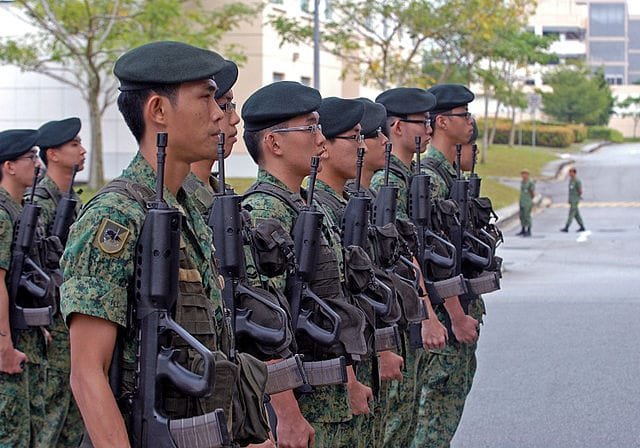
The Small-State Mindset: Building Cohesion Before Crisis
When Singapore launched Total Defense in 1984, it was responding to a simple reality: it could not outgun or outnumber its neighbors. The only way to survive was to make the population inseparable from the state’s defense posture.
The framework rests on six interlocking pillars, military, civil, economic, social, psychological, and digital, each reinforcing the others. Together, they create a feedback system that links public morale, infrastructure, and information resilience.
In Singapore’s planning culture, no ministry or company operates in isolation. A civil emergency becomes a military logistics issue, a psychological messaging issue, and an economic continuity issue at once. This multidimensional mindset treats governance as a single nervous system.
For large nations with sprawling bureaucracies, the takeaway is not to centralize control but to synchronize intent. National security should extend beyond defense ministries into education, healthcare, transportation, and digital infrastructure, creating a network of mutually aware systems.
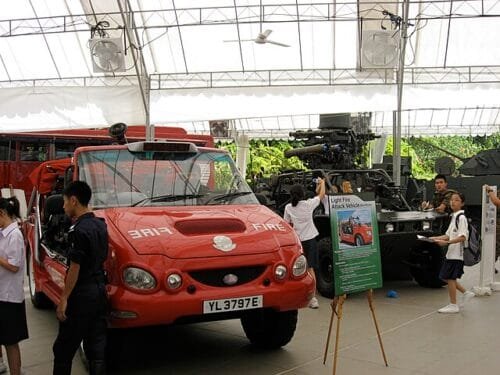
Integration as a Source of Strength
Singapore’s administrative integration is deliberate. Every ministry participates in cross-sector contingency planning, and major corporations coordinate with civil authorities during national exercises. The result is a culture where efficiency and resilience reinforce one another.
In large states, institutions often guard jurisdiction more than they guard continuity. The United States, India, and many European countries maintain vast agency networks that excel individually but coordinate poorly in crisis. Integration, in this sense, is not a loss of autonomy but a gain in predictability.
Creating interoperable doctrine, common operating language across civilian and defense institutions, builds the connective tissue that keeps systems functioning under strain. The model works because integration is treated as a policy discipline, not an ad hoc task.
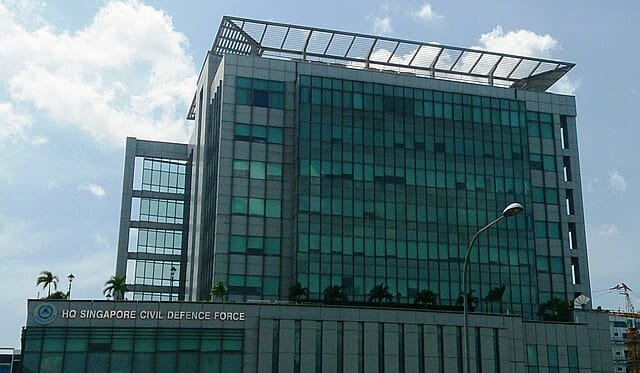
Civil Defense as National Literacy
The Singapore Civil Defense Force (SCDF) runs preparedness programs that reach from schools to corporations. Its community drills, neighborhood shelters, and first-aid courses ensure that resilience becomes habit rather than spectacle. The motto “There’s A Part For Everyone” reflects this integration between daily life and national security.
Large states frequently treat civil defense as emergency management, activated only after disaster strikes. Singapore instead treats it as a form of civic literacy. The more distributed the knowledge of what to do, the less panic, rumor, and paralysis during crisis.
Embedding preparedness in education systems and professional standards builds muscle memory across generations. The act of learning resilience becomes an act of citizenship, closing the gap between civilians and the state.
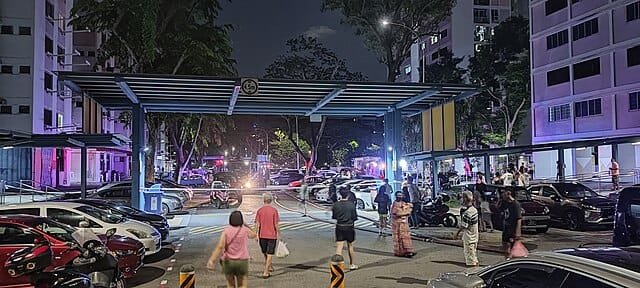
Economic Defense Through Continuity
Singapore’s economic defense is organized around one word: continuity. The state assumes that trade routes can close, energy prices can spike, and digital logistics can fail. It plans accordingly through redundancy, reserves, and long-term contracts.
The Ministry of Trade and Industry works with private enterprises to map vulnerabilities in global supply chains and develop alternatives. Every major port operator, energy distributor, and data hub participates in these exercises.
Larger powers can emulate this approach by mandating continuity planning across critical industries. Supply chain mapping, mutual aid agreements, and strategic reserves should be standard practice. True resilience lies not in isolation but in disciplined interdependence that can reroute under pressure.
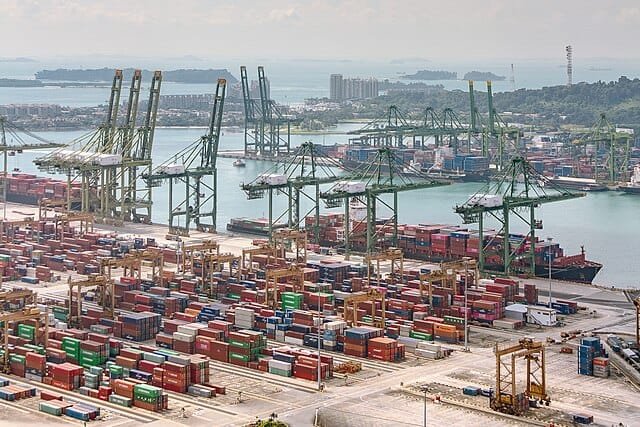
Social Cohesion as a Shield
Singapore’s social defense aims to preserve unity in a society of multiple languages, religions, and origins. The government invests heavily in interfaith dialogues, community centers, and integrated housing policies to ensure that no community becomes isolated.
The architecture of everyday life, housing, education, and conscription, reinforces this cohesion. Every citizen shares the same public services, the same defense obligations, and the same civic narrative. The system prevents fragmentation before it appears.
In large and diverse societies, social cohesion can become the decisive variable between recovery and disorder. Investing in shared spaces, cross-cultural education, and digital civility programs can replicate some of the same resilience Singapore enjoys without replicating its centralization.
Psychological Defense and Shared Purpose
Singapore recognizes morale as a measurable resource. Its psychological defense pillar connects education, history, and communications to create a sense of ownership. Students learn how occupation and independence shaped national identity. Adults are reminded that vigilance is collective, not delegated.
This shared sense of purpose explains the country’s rapid recovery from crises like SARS, the global financial crash, and the COVID-19 pandemic. Citizens act not because they are ordered to, but because they already understand why action matters.
Larger states often struggle to maintain such coherence. Restoring it requires transparent communication, credible leadership, and a narrative that binds freedom to responsibility. Citizens who see themselves as participants in resilience will act before systems fail.
Digital Defense as Civic Infrastructure
The newest pillar, Digital Defense, merges cybersecurity with national education. Singapore’s Cyber Security Agency works with private firms, schools, and community groups to improve awareness of phishing, misinformation, and cyber hygiene. The approach treats digital competence as social behavior, not merely technical skill.
Large states possess advanced cyber commands but often lack public integration. Treating citizens and small enterprises as part of the digital perimeter closes that gap. Shared responsibility across public and private networks strengthens the overall system.
In an era where disinformation campaigns can paralyze decision-making faster than physical attacks, teaching digital literacy is equivalent to building fortifications.

Legitimacy Built on Trust
Singapore’s success depends on one intangible resource: legitimacy. The public trusts that national mobilization serves collective, not political, goals. Each Total Defense exercise is transparent, bounded by law, and publicly reviewed.
Large democracies can adapt this principle through oversight, public metrics, and legal clarity. Integration without accountability erodes the very cohesion it seeks to protect. Citizens must see the system as participatory and reversible, not as a tool of control.
Resilience becomes durable only when it is rooted in voluntary cooperation. Trust, once built, multiplies across sectors and crises alike.
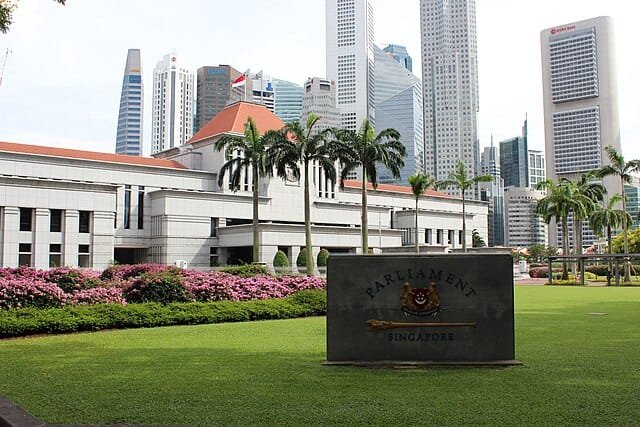
Scaling Small-State Logic
The Total Defense model can be scaled through disciplined systems thinking:
- Map cross-sector dependencies to identify cascade points.
- Assign co-responsibility for each function between state and civil entities.
- Conduct national continuity exercises with private industry participation.
- Publish resilience benchmarks for public accountability.
- Integrate psychological and digital education into civic curricula.
This approach transforms bureaucratic states into adaptive networks. It does not mimic Singapore’s hierarchy but mirrors its coherence, a living architecture of awareness, redundancy, and trust.
Integration as the True Measure of Power
Singapore’s Total Defense demonstrates that power resides in systems, not in size. By aligning its people, infrastructure, and governance around shared responsibility, it achieves what many larger nations fail to sustain — cohesion under uncertainty.
For great powers facing complex global competition, adopting elements of small-state discipline may become essential. Integration of policy, communication, and trust is the ultimate deterrent in an era of hybrid threats.
Resilience, once institutionalized, becomes culture. It is built every day through habits of coordination, transparency, and civic pride. Large states that learn this lesson may discover that genuine strength begins with design, not reaction.
DISCLAIMER: Links included might be affiliate links. If you purchase a product or service with the links that I provide I may receive a small commission. There is no additional charge to you.





Leave a Reply